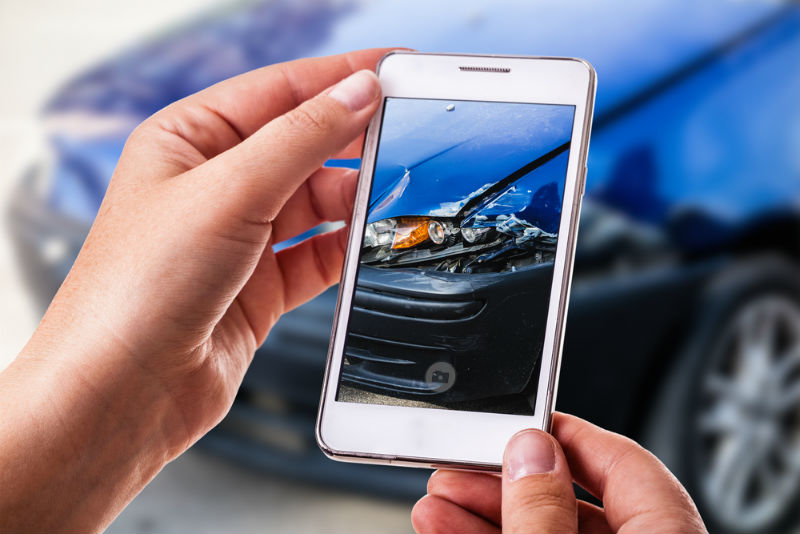When you are involved in a car accident, your first priority should be to determine if you or anyone else is hurt. Contact emergency services to request medical assistance for anyone who is injured. Even in a minor car accident that does not involve traumatic injuries, it is common to feel shaken and upset, which is a perfectly normal reaction regardless of the severity of the accident. However, if you can remain calm and think clearly, you can take steps at the accident scene that can help you when you file your accident claim.
One of the best things you can do to help your case is to take photos of the accident scene before anything is moved. You should record everything about the incident for evidence. This includes all damage as well as the position of the vehicles and any skid marks visible on the road. Here are some tips to help you take good photos.
-
Include the Date and Time

Make sure your camera’s timestamp is turned on before you begin taking pictures of the accident scene. This ensures the photos show the correct date and time. You don’t want the photos dismissed as irrelevant because they can’t be verified for the time of the accident.
-
Include Photos of Skid Marks
Skid marks provide valuable information about the accident. They show what angle the vehicle was traveling and even at what speed the vehicle may have been traveling at the time of the collision. Photographs of skid marks can help prove your case if the driver failed to use the brakes or was driving over the speed limit. Make sure your photos are close-ups of the skid marks, in addition to other angles, to get the most detail.
-
Take Photos of the Surrounding Area
Take photos of the surrounding areas where the accident occurred. This includes traffic signs and any traffic signals or other markers. This could help you prove your case if the crash occurred because of driver negligence or other issue. For instance, a sign that was partially hidden by a bush or tree branch will have an impact on determining fault.
-
Show Injuries and Damages
Take photos of your injuries and any damage to your vehicle. Make sure you include timestamps to show the damage was part of the collision. Continue to photograph your injuries throughout your recover to establish a timeline for your recovery.
-
Show the Position of Vehicles
Include the position of the other vehicle as well as your own. Use a wide angle to capture a photo of both vehicles to show their positions in relation to each other.
While photos don’t tell the entire story, they are important. As the adage says, a picture is worth a thousand words and photos can help prove your case. Because the accident scene will change once the vehicles are removed, and the area is cleared of debris, it is vital to preserve the scene at the time of the collision. When you are taking photographs, remember to protect yourself. Only take pictures if you can do so from a safe location. Don’t jeopardize your health and safety or another person’s health and safety to take photographs.
Call A New Orleans Accident Attorney for Help
If you are injured in an accident, call our office for a free legal consultation. Even if you are unable to take pictures of the accident scene, there is other evidence we can use to prove the other driver caused the collision. Call Fred Olinde of The Olinde Firm at (504) 587-1440 or 1-800-587-1889 to schedule a free case evaluation.

